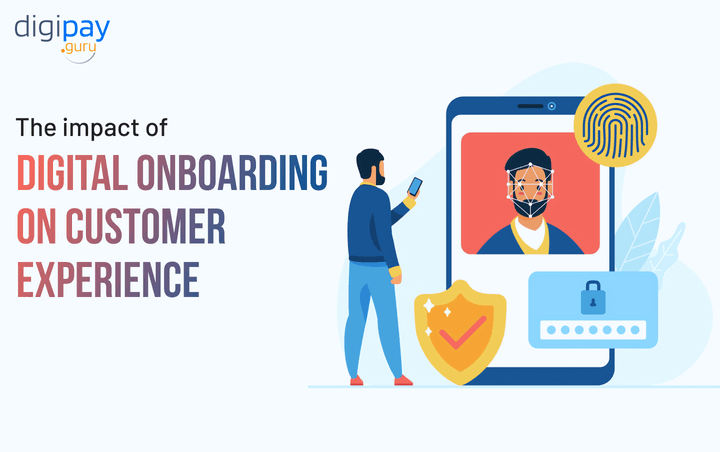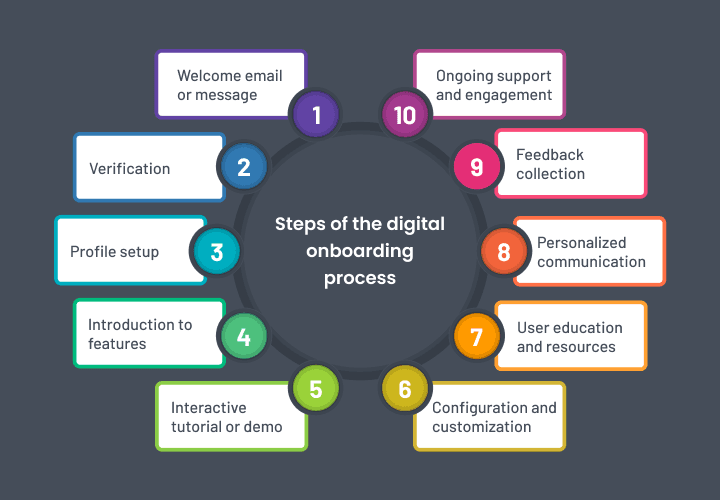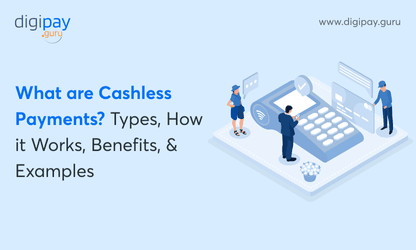In today's fast-paced digital world, customer experience is a critical aspect of any business and can make or break the success of a company. It refers to the overall experience that a customer has with a company, including the interactions they have with the company's products, services, and personnel.

A positive customer experience can result in increased customer loyalty, repeat business, and positive word-of-mouth recommendations, while a negative customer experience can lead to lost business and negative reviews.
According to a study conducted by Oracle, it was found that around 86 % of customers are likely to pay more for a better customer experience.
The advent of digital onboarding has revolutionized the way organizations welcome new customers and employees. By providing a seamless and efficient experience, a digital onboarding solution can significantly improve the customer experience.
In this article, we will explore the impact of digital onboarding on customer experience and provide insights into best practices for companies looking to adopt digital onboarding
Understanding Digital Onboarding
What is Digital Onboarding?
Digital onboarding is the process of welcoming new customers or employees to an organization through digital means, such as online forms, e-mail, video conferencing, and other digital tools.
The purpose of digital onboarding is to provide a seamless and efficient experience for the new customer or employee, as well as to streamline the onboarding process for the organization.
With digital onboarding, organizations can quickly and easily provide new customers or employees with the information they need to get started and ensure that they feel welcomed and valued.
Benefits of Digital Onboarding

Here are the key advantages of digital onboarding:
Streamlined process
Digital onboarding can simplify and automate many of the onboarding steps, making the process more efficient and user-friendly.
Improved user experience
By focusing on the end-user, organizations can ensure that the onboarding process is intuitive and provides relevant information.
Increased customer satisfaction
Digital onboarding can result in increased customer satisfaction and engagement by providing a convenient and efficient experience.
Improved consistency and accuracy
Digital onboarding can help ensure that all new customers receive the same information and experience and that the information collected is accurate and up-to-date.
Increased efficiency
Automation of onboarding tasks can help save time and increase efficiency.
Access to information and resources
Digital onboarding can provide instant access to information and resources that can help the new customer or employee get started quickly.
Increased customer loyalty
By providing a positive onboarding experience, digital onboarding can result in increased customer loyalty and repeat business.
Cost savings
Digital onboarding can reduce costs associated with manual onboarding processes and minimize errors.
Steps of the digital onboarding process
Digital onboarding is the process of welcoming new customers or users to your digital platform, product, or service. The following are the typical steps involved in a digital onboarding process:

Welcome email or message
As soon as a new user signs up, you should send a welcome message or email to introduce yourself and the product/service. This can also be used to set expectations on what they can expect in the onboarding process.
Verification
Verify the user's identity using two-factor authentication or any other means necessary to ensure their identity and security.
Profile setup
Collect user details such as name, profile picture, email address, and any other required information.
Introduction to features
Introduce the user to the product's features and functionality, so they know what they can do and how to do it.
Interactive tutorial or demo
Create an interactive tutorial or demo to guide users through the product's core features, processes, and functionalities.
Configuration and customization
Allow users to configure and customize their settings, preferences, and profiles to meet their needs.
User education and resources
Provide users with educational materials such as videos, blog posts, or help documentation to help them learn more about the product.
Personalized communication
Establish personalized communication with users to address their needs, concerns, and feedback.
Feedback collection
Gather feedback from users to help improve the product, experience, and customer service.
Ongoing support and engagement
Provide ongoing support to help users navigate the platform and engage with them via newsletters, product updates, and promotional materials.
Differences between Traditional Onboarding and Digital Onboarding
| Traditional Onboarding | Digital Onboarding |
|---|---|
| Typically manual and paper-based | Automated and digital-based |
| Can be time-consuming and error-prone | Streamlined and efficient |
| Limited access to information and resources | Instant access to information and resources |
| Limited customization options | High level of customization options |
| May not provide real-time feedback | Provides real-time feedback and updates |
| May not provide a positive customer experience | Focuses on providing a positive customer experience |
| May not result in increased customer satisfaction and engagement | Can result in increased customer satisfaction and engagement |
| May result in inconsistent onboarding experiences | Provides consistent onboarding experiences |
Overall, digital onboarding offers numerous advantages over traditional onboarding, including improved efficiency, increased customer satisfaction and engagement, and greater access to information and resources.
The Impact of Digital Onboarding on Customer Experience
Improved Convenience and Efficiency
One of the most significant impacts of digital onboarding on customer experience is improved convenience and efficiency. By using digital tools and automating many of the onboarding steps, organizations can provide a more seamless and user-friendly experience for new customers.
This can include online forms for collecting information, instant access to information and resources, and automated communications and reminders. These enhancements can help ensure that the new customer feels supported and valued, which can result in increased customer satisfaction and engagement.
Increased Customer Satisfaction and Engagement
Another impact of digital onboarding on customer experience is increased customer satisfaction and engagement. By providing a convenient and efficient experience, digital onboarding can help increase the new customer's sense of value and connection to the organization.
This can result in increased customer loyalty, repeat business, and positive word-of-mouth recommendations. Whether you are a business owner or an employee, it is clear that digital onboarding can have a significant impact on customer experience, which can help drive business success.
Improved Consistency and Accuracy
Finally, customer digital onboarding can help improve the consistency and accuracy of the onboarding process. By using digital tools and automating many of the steps, organizations can ensure that all new customers receive the same information and experience and that the information collected is accurate and up-to-date.
This can help improve the overall customer experience and reduce the risk of errors and mistakes, which can result in increased customer satisfaction and engagement. Whether you are a business owner or an employee, it is clear that digital onboarding is a valuable tool for improving the customer experience and driving business success.
Some real-life examples of the impact of digital onboarding on customer experience are mentioned below:
| Company | Impact of Digital Onboarding |
|---|---|
| Hubspot | Improved the customer experience by reducing the time it takes for customers to get started, increased customer engagement and satisfaction, and reduced churn rates. |
| Salesforce | Streamlined the onboarding process, improved the overall customer experience, and reduced customer churn. |
| Shopify | Provided a more efficient and user-friendly onboarding experience, leading to increased customer satisfaction and engagement. |
| Zendesk | Improved the onboarding process by providing instant access to information and resources and streamlined the process by automating many manual tasks. |
| Slack | Improved the customer experience by providing a more efficient and user-friendly onboarding process and increased customer engagement and satisfaction. |
Best Practices for Digital Onboarding
Streamlining the Onboarding Process
One of the key benefits of digital onboarding is the ability to streamline the onboarding process. To achieve this, organizations should focus on simplifying and automating as many of the onboarding steps as possible.
This can include using online forms to collect information, automating the distribution of welcome emails and other communications, and providing instant access to information and resources that can help the new customer or employee get started quickly.
By streamlining the digital onboarding process, organizations can provide a more efficient and user-friendly experience for new customers or employees.
Focusing on User Experience
Another key factor in creating a successful digital onboarding experience is to focus on the user experience. This means designing the onboarding process with the end-user in mind, ensuring that the process is intuitive, easy to navigate, and provides relevant and timely information.
Focusing on the user experience is the future of customer onboarding in banks, financial institutions, and businesses to ensure that the new customer or employee feels valued and supported, which can help increase customer satisfaction and engagement.
Read More: Future of Customer Onboarding in Banks
Providing Relevant and Timely Information
It is important to provide relevant and timely information to the new customer or employee. This includes information about the company and its products and services, as well as any resources or support that may be available.
By providing relevant and timely information, organizations can help new customers or employees get started quickly and feel more confident and engaged with the company.
Conclusion
The impact of digital onboarding on customer experience is clear and undeniable. With the ability to streamline the onboarding process, focus on user experience, provide relevant and timely information, and improve consistency and accuracy, digital onboarding has the potential to drive significant benefits for organizations and their customers.
By choosing DigiPay.Guru's advanced mobile money payment solution, organizations can take advantage of the latest technology and tools to create a seamless, efficient, and effective onboarding process that provides a positive experience for new customers and employees.
Whether you are a business owner or an employee, DigiPay.Guru's advanced digital payment solution is the perfect choice for a business looking to improve the customer experience and drive business success.
With a commitment to innovation, customer service, and quality, Digipay. guru is the premier provider of digital payment solutions and the ideal partner for staying ahead of the curve and succeeding in today's fast-paced digital landscape.




